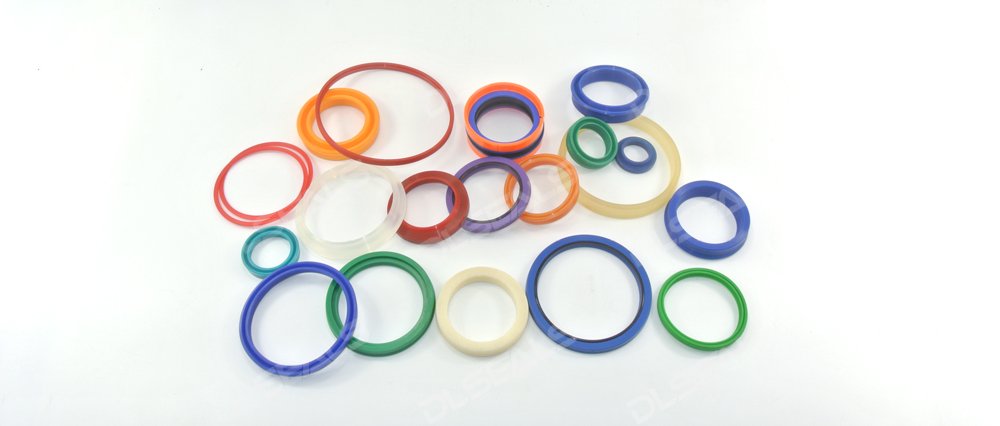When it comes to ensuring the efficiency and longevity of machinery, equipment, and various mechanical systems, rubber seals play a crucial role. But with so many types available, how do you choose the right one for your needs? In this comprehensive guide, we’ll explore the different types of rubber seals, their applications, and factors to consider to help you make an informed decision.
What Are Rubber Seals?
Rubber seals are components designed to prevent leaks of fluids or gases in mechanical systems. They provide a barrier between two surfaces to prevent the escape of lubricants, oils, or other substances. These seals are essential in many applications, from automotive engines to industrial machinery.
Types of Rubber Seals and Their Uses
Understanding the various types of rubber seals can help you select the most suitable one for your specific requirements. Here are the most common types and their uses:
1. O-Rings
O-rings are one of the most widely used rubber seals. They are simple, circular seals designed to fit into a groove and provide a seal between two parts. O-rings are used in a variety of applications including hydraulic cylinders, automotive engines, and household appliances.
Applications:
Automotive: Oil and coolant seals.
Hydraulic Systems: Pressure seals in pumps and cylinders.
Household: Plumbing fixtures and appliances.
Pros:
Versatile and cost-effective.
Simple design, easy to install.
Cons:
Limited to static sealing applications.
Keywords: O-Rings, rubber seals for automotive, hydraulic O-Rings, household appliance seals.
2. Gaskets
Gaskets are flat rubber seals used to fill the space between two mating surfaces. They are available in various shapes and sizes and are designed to create a tight seal that prevents leaks.
Applications:
Automotive: Engine gaskets and oil pan gaskets.
Industrial: Flange gaskets and pump seals.
Home: Kitchen appliances and HVAC systems.
Pros:
Ideal for flat surfaces and high-pressure applications.
Available in different materials and thicknesses.
Cons:
May require precise installation.
Keywords: Gaskets, automotive gaskets, industrial gaskets, home appliance gaskets.
3. Oil Seals
Oil seals, also known as shaft seals, are used to seal the area around a rotating shaft to prevent oil leakage. They are commonly found in automotive and industrial applications.
Applications:
Automotive: Engine oil seals and transmission seals.
Industrial: Machinery components and gearboxes.
Pros:
Effective at preventing oil leakage.
Durable and resistant to wear.
Cons:
May wear out over time and require replacement.
Keywords: Oil Seals, shaft seals, automotive oil seals, industrial oil seals.
4. Lip Seals
Lip seals are designed with a lip that presses against a rotating or stationary surface to prevent leakage. They are often used in applications where there is a combination of rotary and static sealing.
Applications:
Automotive: Axle seals and wheel seals.
Industrial: Pump seals and hydraulic machinery.
Pros:
Good for both static and dynamic applications.
Versatile and effective.
Cons:
Can be more complex to install compared to O-Rings.
Keywords: Lip Seals, rotary seals, automotive lip seals, industrial lip seals.
5. V-Seals
V-seals are designed to protect shafts from dust, dirt, and debris while preventing leakage. Their V-shaped design provides a simple yet effective sealing solution.
Applications:
Automotive: Engine and transmission protection.
Industrial: Bearing and shaft seals.
Pros:
Excellent at keeping out contaminants.
Simple design, easy to install.
Cons:
Limited to specific sealing applications.
Keywords: V-Seals, rubber V-Seals, automotive V-Seals, industrial V-Seals.
6. U-Cups
U-cups, also known as U-Seals, are used in hydraulic and pneumatic applications. Their U-shaped cross-section provides a reliable seal for high-pressure systems.
Applications:
Hydraulic Systems: Cylinder seals and piston seals.
Pneumatic Systems: Air compressor seals.
Pros:
Effective for high-pressure applications.
Durable and long-lasting.
Cons:
More complex design, may be more expensive.
Keywords: U-Cups, hydraulic U-Seals, pneumatic U-Seals, high-pressure seals.
How to Choose the Right Rubber Seal for Your Needs
Choosing the right rubber seal depends on several factors:
1. Application Requirements
Determine the specific requirements of your application, including the type of fluid or gas being sealed, the pressure and temperature conditions, and the movement type (static or dynamic).
2. Material Compatibility
Ensure the rubber material is compatible with the fluid or gas you are sealing. Common materials include nitrile rubber (NBR), fluorocarbon (Viton), and silicone rubber, each with different properties.
3. Seal Design
Consider the seal’s design, including its shape and structure, to ensure it meets the needs of your application. For example, O-rings are ideal for static seals, while lip seals are better for dynamic sealing.
4. Cost vs. Performance
Evaluate the cost of the seal in relation to its performance. Higher-quality seals might be more expensive but can offer better durability and performance.
Conclusion
Rubber seals are essential components for many mechanical systems, each type offering different benefits for various applications. By understanding the different types of rubber seals—O-rings, gaskets, oil seals, lip seals, V-seals, and U-cups—you can make an informed decision to meet your specific needs.
Whether you need a seal for automotive engines, hydraulic systems, or household appliances, choosing the right type of rubber seal can enhance performance and extend the lifespan of your equipment.
For more information on rubber seals and their applications, contact us or visit our product page to find the perfect seal for your needs!
Post time: Jul-19-2024

